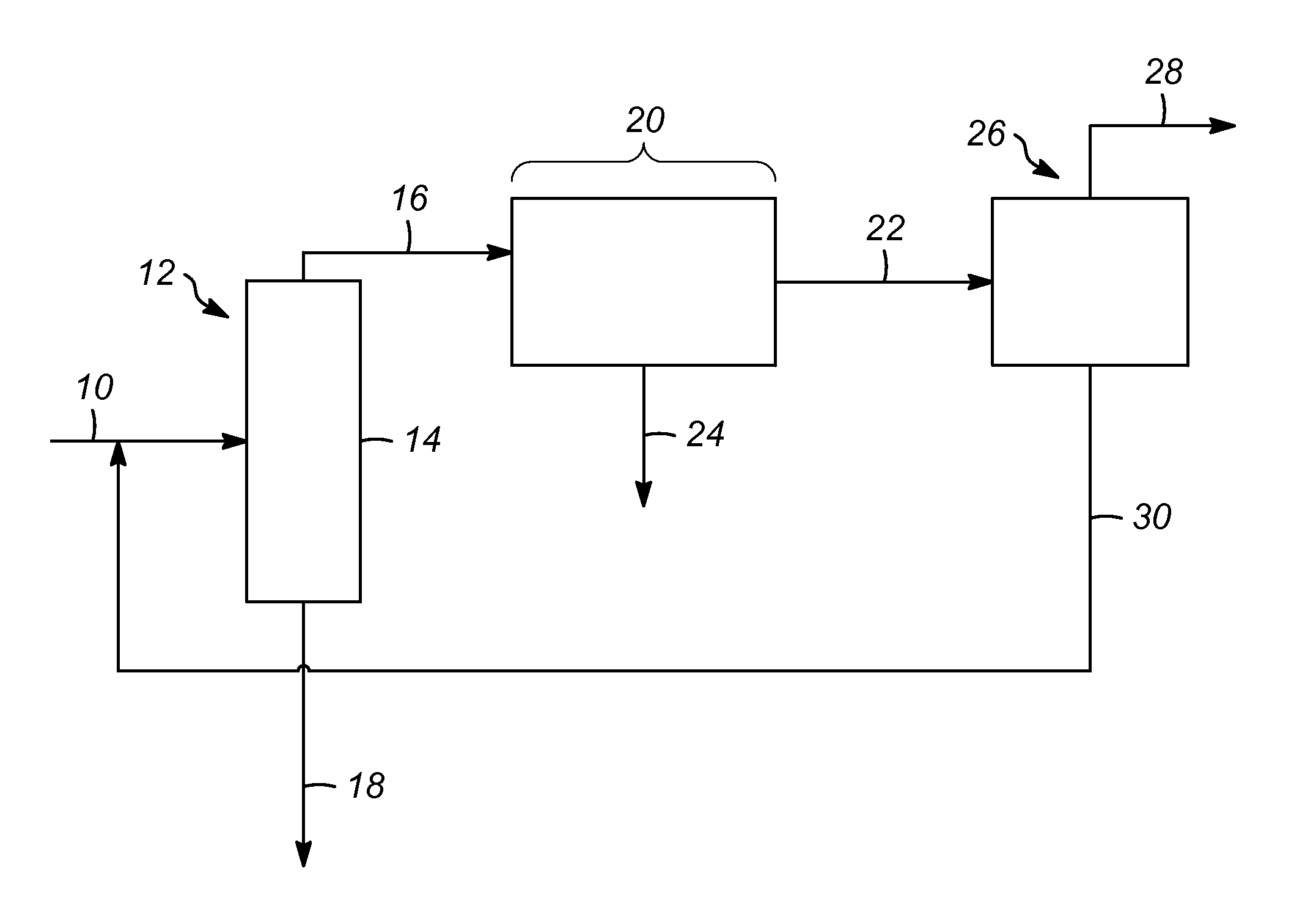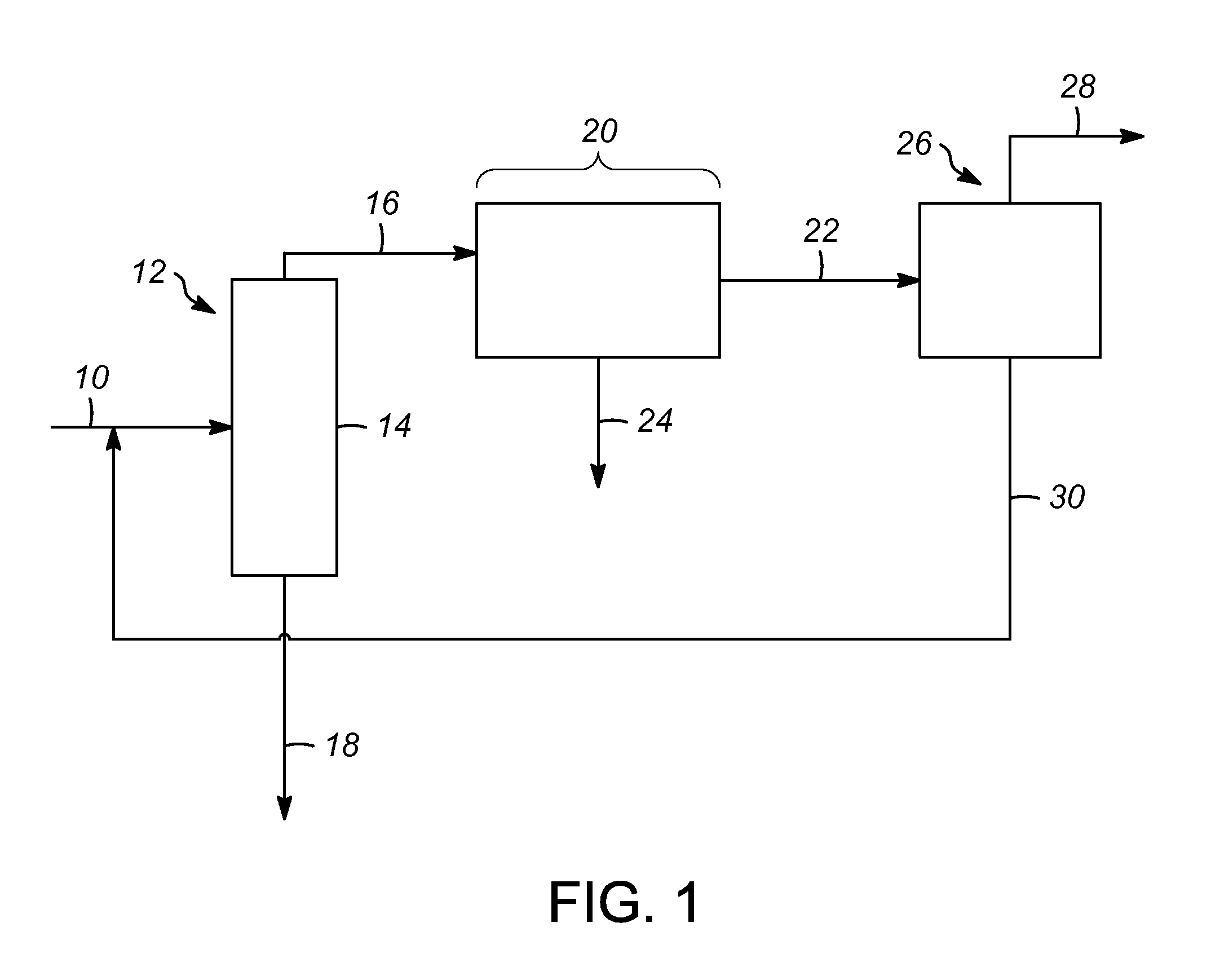Process for increasing the yield of an isomerization zone
a technology of isomerization zone and yield, which is applied in the direction of hydrocarbon preparation catalysts, thermoplastic naphtha reforming, organic chemistry, etc., can solve the problems of large recycle stream, large fractionation column, large utility cost, etc., and achieves the effect of increasing overall conversion and promoting disproportionation reactions
- Summary
- Abstract
- Description
- Claims
- Application Information
AI Technical Summary
Benefits of technology
Problems solved by technology
Method used
Image
Examples
Embodiment Construction
[0022]As mentioned above, it has been discovered that the efficient conversion of iC4, iC5, and iC6 hydrocarbons to normal paraffins in the isomerization zone can be achieved by removing at least a portion of the C6 cyclic hydrocarbons, such as cyclohexane, methyl-cyclopentane, and benzene, from the stream passed into the isomerization zone.
[0023]The ability to combine the isomerization of the C4, C5, and C6 hydrocarbons will lead to lower capital expenditures and lower operating expenses because the two separate isomerization zones can be combined. Thus, such a process allows for less equipment, as well as more efficient use of the remaining equipment.
[0024]As shown in the FIGURE, in an exemplary embodiment of the present invention, a feed stream 10 is passed into a first separation zone 12. The feed stream 10 is preferably hydrotreated naphtha comprising C4+ hydrocarbons (meaning hydrocarbons having four or more carbon atoms).
[0025]The first separation zone 12 may include a separa...
PUM
 Login to View More
Login to View More Abstract
Description
Claims
Application Information
 Login to View More
Login to View More - R&D
- Intellectual Property
- Life Sciences
- Materials
- Tech Scout
- Unparalleled Data Quality
- Higher Quality Content
- 60% Fewer Hallucinations
Browse by: Latest US Patents, China's latest patents, Technical Efficacy Thesaurus, Application Domain, Technology Topic, Popular Technical Reports.
© 2025 PatSnap. All rights reserved.Legal|Privacy policy|Modern Slavery Act Transparency Statement|Sitemap|About US| Contact US: help@patsnap.com


